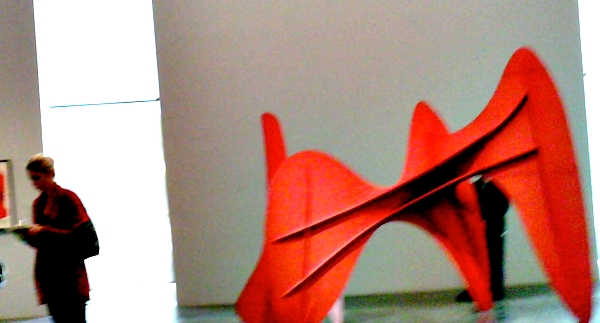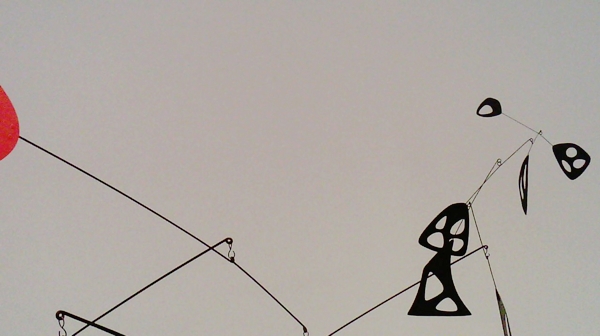
A leaked British report into the archaeological significance of an ancient Roman gold mine has helped to scupper plans by the Romanian government to approve invasive mining at the site.

A leaked British report into the archaeological significance of an ancient Roman gold mine has helped to scupper plans by the Romanian government to approve invasive mining at the site.

By the time of the U.K.‘s Great Train Robbery in 1963, train robbing had already passed more or less into quaintness. But quaintness did nothing to deter 15 men from stopping a train in Buckinghamshire and hauling in what would be equivalent to over $7 million USD today. Several of the robbers were sentenced to a rather harsh 30 years in prison, including Ronnie Biggs, who, though not the caper’s ringleader, achieved the gang’s greatest notoriety by escaping from prison less than a year and a half into his sentence, fleeing to France for appearance-altering plastic surgery, and eventually living openly as a fugitive in Brazil, who would not extradite him to the U.K.
Then, in 1978, at age 49, he became a punk singer.

Julien Temple’s preposterous and incoherent Sex Pistols film The Great Rock ‘n’ Roll Swindle brought that band—by then halved to just drummer Paul Cook and guitarist Steve Jones—to Rio de Janeiro, where they met up with Biggs and with him recorded “No One Is Innocent
” and “Belsen Was A Gas.” A ridiculous but very, very fun scene in the film shows the band, with Biggs as their new singer, performing “Innocent” with bass player/Nazi fugitive Martin Bormann—actually an actor. One conceit of the film had it that rather than dying in 1945, Bormann escaped to Brazil. And joined The Sex Pistols. Did I mention preposterous?
Biggs was no newbie to music, though—he’d already participated in the creation of a jazz album in 1974! The collaboration with Bruce Henry was titled Mailbag Blues, and the album finally saw release in 2004. Per Bruce Henry via whatmusic.com:
Mailbag Blues was written over a couple months’ period ... with Ronnie at our side telling us his story and us breaking it down into events that we most related to musically. The songs are structured as a soundtrack, each one telling us part of a story and leading on to the next. When we went into the studio to record, we had the whole album pretty well defined, but we left a lot of room for individual improvisation, as was the style in 1974.
The recording took place in a very small room, on a four track Ampex Tape Recorder. Everybody played together, and we only used playback on one or two tracks for additional percussion. We were so young and eager back then, and we took ourselves so seriously, that we wouldn’t let Ronnie sing, which is too bad because he had a terrible voice but the Sex Pistols did all right with it didn’t they?

“London ‘63” from Mailbag Blues
Later, in 1991, German pin-up punks Die Toten Hosen tapped Biggs to sing “Carnival In Rio (Punk Was),” the lone original song on their covers/tribute album Learning English - Lesson One. For the b-side of the song’s single, he reprised his turn on “No One Is Innocent” and also covered The Equals’ classic “Police On My Back.”
Die Toten Hosen with Ronnie Biggs, “Police On My Back”
After years of ill health, including multiple strokes, Biggs surrendered to British authorities in 2001. He was promptly arrested, and confined to complete his original sentence. He was released, due to further deteriorating health, in 2009, and was able to contribute to the book The Great Train Robbery 50th Anniversary:1963-2013. His years of illness finally claimed his life today.
Rest in peace, Mister Biggs. Nobody can say you didn’t live an amazingly colorful life.

All that Purple Haze must have gone to Jimi Hendrix’s head when he agreed to pose for this advertisement dressed as Santa Claus back in 1967, but I guess he was so used to living in an Electric Ladyland that he didn’t mind dressing as Bold As Love in order to sell a few more copies of his album.
This cover shot comes from the December 23, 1967 issue of Record Mirror, and was used to promote then new release Axis: Bold As Love, which Santa Hendrix holds in his hands for all to admire.
As a bonus you can watch a performance at the link that was recorded the night before at Christmas on Earth Continued, with thirteen minutes of footage showing Jimi jamming at his prime.
Via Dangerous Minds





The book that emerged from a bog after 1200 years
This is the remarkable story of a medieval book that spent 1200 years in the mud. Around 800 someone had a Book of Psalms made, a portable copy fitted with a leather satchel. The book consisted of sixty sheets of parchment that were carefully filled with handwritten words. Somehow the book ended up in a remote bog at Faddan More in north Tipperary, close to the town of Birr. Dropped, perhaps, by the owner? Was he walking and reading at the same time? Did he himself also end up in the bog?
Fast-forward to 2006. Eddie Fogarty, the operator of a turf digger, noticed an object with faint lettering in the bucket of his machine (pic 1). There it was again, our Book of Psalms! At this point it resembled something from an Aliens movie (pic 2), but that changed quickly after it went to the restoration lab. Thanks to the conservation properties of turf, many pages were still intact, as was its leather satchel (pic 3), the only surviving specimen from this early period. Remarkably, among the damaged pages were some that had let go of the words: kept together merely by ink, the words were floating around by themselves - like some sort of medieval Scrabble (pic 4). It’s the most remarkable bookish survival story I know.
More on this phenomenal find in this news article and this one. Here is the bog and the machine that dug up the book More on the restoration process here. More about the papyrus found in the binding here. This is a nice movie on the book.


Leonardo DiCaprio has long been an advocate of environmental ventures – and he just teamed up with Venturi Automobiles to launch the world’s first electric vehicle racing series. If all goes as planned, the new FIA Formula E Championship will commence as early as September 2014.


Read the rest of Leonardo DiCaprio and Venturi Automobiles Unite to Launch the World’s First Electric Racing Series
Permalink | Add to del.icio.us | digg
Post tags: e-cars, e-vehicles, electric racing cars, FIA Formula E Championship, Leonardo DiCaprio, Sir Richard Branson, Venturi Automobiles, Venturi Grand Prix Formula E Team, Virgin Group
SPONSORED: This post is presented by the Toyota RAV4 EV. Because innovation can be measured in miles, kilowatts and cubic feet. Learn more at toyota.com/rav4ev

Alexander Calder with [Paul] Matisse and a maquette of his last mobile. The maquette was enlarged 40 times in the final piece. (Source: Alexander Calder Special Collection Photo)
 So it's not surprising that Calder become a sculptor as well. But unlike his forebears, Calder was not interested in traditional sculpture. Instead, he invented a new art form -- kinetic sculpture -- the most famous of which were his "mobiles," (a word coined by his friend, the artist Marcel Duchamp). These delicately balanced sculptures consist of biomorphic shapes cut from sheet metal and painted in black, white, orange, red, white, yellow, and blue, and which hang from metal rods and wire.
So it's not surprising that Calder become a sculptor as well. But unlike his forebears, Calder was not interested in traditional sculpture. Instead, he invented a new art form -- kinetic sculpture -- the most famous of which were his "mobiles," (a word coined by his friend, the artist Marcel Duchamp). These delicately balanced sculptures consist of biomorphic shapes cut from sheet metal and painted in black, white, orange, red, white, yellow, and blue, and which hang from metal rods and wire.
 Calder's innovative use of materials, gracefully moving mobiles, and startlingly unique stabiles led to Calder becoming one of the most famous artists of all time. In the 1970s no major city was complete without a giant-sized Calder stable on permanent display. His work "shatters the illusion of everything that sculpture ever was," said Arne Glimcher, the chair of the Pace Wilderstein Gallery. "It is unlike any body of work created this century."
Calder's innovative use of materials, gracefully moving mobiles, and startlingly unique stabiles led to Calder becoming one of the most famous artists of all time. In the 1970s no major city was complete without a giant-sized Calder stable on permanent display. His work "shatters the illusion of everything that sculpture ever was," said Arne Glimcher, the chair of the Pace Wilderstein Gallery. "It is unlike any body of work created this century."
 This weekend Carla and I went to a terrific Calder exhibit at the Los Angeles County Museum of Modern art. On display were dozens of his mobiles and stabiles (stationary abstract sculptures).
This weekend Carla and I went to a terrific Calder exhibit at the Los Angeles County Museum of Modern art. On display were dozens of his mobiles and stabiles (stationary abstract sculptures).
 As I admired the sculptures, I wondered how Calder was able to get his mobiles to balance.
As I admired the sculptures, I wondered how Calder was able to get his mobiles to balance.
 I looked closely at the way Calder attached the pieces of his mobiles, because I wanted to try making a mobile when I got home.
I looked closely at the way Calder attached the pieces of his mobiles, because I wanted to try making a mobile when I got home.
 The first thing I did was draw a bunch of biometric shapes on a sheet of corrugated cardboard. Then I cut them out with a snap-blade knife.
The first thing I did was draw a bunch of biometric shapes on a sheet of corrugated cardboard. Then I cut them out with a snap-blade knife.
 Using the same sheet of cardboard, I cut out pieces for a base and glued them together.
Using the same sheet of cardboard, I cut out pieces for a base and glued them together.
 I used coat hanger wire to connect the cardboard shapes together.
I used coat hanger wire to connect the cardboard shapes together.
 It took a lot of fiddling to get the thing to balance. I was able to manage it by repositioning the cardboard on the wire, and by snipping off pieces of cardboard. My Calder rip-off is ugly and ungainly compared to the real thing, but I enjoyed making it, and feel like I got a bit of insight into his process. I looked for a video that showed Calder at work, but I couldn't find one. I'd love to see him making his art.
It took a lot of fiddling to get the thing to balance. I was able to manage it by repositioning the cardboard on the wire, and by snipping off pieces of cardboard. My Calder rip-off is ugly and ungainly compared to the real thing, but I enjoyed making it, and feel like I got a bit of insight into his process. I looked for a video that showed Calder at work, but I couldn't find one. I'd love to see him making his art.
A short video of Calder's mobiles.
The above movie, Dreams That Money Can Buy (1947), is an avant garde film that has Calder's mobiles and his incredible animatronic wire circus. (This version of the movie has crappy overdubbed music, but it's worth watching nonetheless).
 Here, i want to show how to make a beautiful glass balls in Photoshop. it can be used in many fields specially if you are a graphic designer. it is simple and doesn't need high designing knowledge. Drow the basic shapes All the complicated shapes includes these three basic : circle, triangle and...
Here, i want to show how to make a beautiful glass balls in Photoshop. it can be used in many fields specially if you are a graphic designer. it is simple and doesn't need high designing knowledge. Drow the basic shapes All the complicated shapes includes these three basic : circle, triangle and...Keith Jones was scammed out of US$110,000 by a fraudulent investment firm. Not surprisingly, law enforcement initially had little interest in the case, so Mr. Jones decided to track down the criminals on his own, leading him from his home in Australia to Thailand. He made this high-quality and fascinating documentary of his sleuthing.
HSBC bank, which gave the scammers an account to rip off Mr. Jones, also refused to help him. (That's not surprising either, once you read Matt Taibbi's Rolling Stone article, "Gangster Bankers: Too Big to Jail How HSBC hooked up with drug traffickers and terrorists. And got away with it.")
Above, an update to Jones' story. Unfortunately, the criminals are still at large.
This story is one of deceit, theft, police incompetence, international loopholes and the apathy of a major corporate bank. It is also his story of how almost entirely on his own he tracked down a sophisticated gang of fraudsters.
This is his second time in Bangkok in two years, and exactly as before, he’d rather not be there, but unfortunately, sometimes, there are things that you just have to do whether you like it or not. He’s about to board an overnight train to Chiang Mai, a 14 hour journey to the north of Thailand. He’s making this film as a record of the atrocious and ridiculous events that have lead him to this point. He’s also making it as some sort of catharsis. Finally, he’s making it as a stark warning to others.
Life can be strange sometimes. One minute, you can be travelling along thinking that everything is okay, and almost out of nowhere, the malicious actions of another person can affect your life forever. His story begins back in Australia. He was working from his office one day, when the phone rang. It was the company calling themselves Humphrey Capital Investments, a global financial services group with offices in California and Singapore. Over the coming weeks, he had several informal conversations with their senior portfolio manager John Thompson. One of his recommendations was to invest in Nokia shares. This seemed to present a good buying opportunity.
Humphrey Capital Group sent him client forms, and after processing his application, they bought Nokia shares on his behalf. He subsequently paid the invoice by bank transfer to their company account at an HSBC bank in Hong Kong. Over the coming weeks, John Thompson rang him several times to discuss his portfolio, but at the end of the month, he rang to tell him that his company had been bought out by a group called Wellnic Investments. His new advisor would be Edward Martin, the Vice Chairman of Wellnic Investments. Wellnic’s credentials looked similarly impressive, and their website showed detailed information on the company.
A few days later, he had a call from Edward Martin, and like his predecessor, Edward had an American accent and came over as professional and friendly. He explained that he’d be his new advisor, and he looked forward to a long and profitable relationship, and that’s exactly how it turned out to be. Over a very long period, Keith Jones purchased a variety of low-risk US stocks, trusts and deposits. All trades were paid for through account at a HSBC Bank in Hong Kong.
Subsequently, like the proverbial lamb to the slaughter, he continued to make investments through the Wellnic Group. Within 12 months, he’d invested over $110,000 US dollars. Even saying it now makes him feel quite sick. You often hear that people are scammed through greed, and where unrealistic returns are involved, but most of his investments with Wellnic were supposed to pay around 10 to 12 percent per annum; good, but at the time, not unrealistic. In fact, it was only when things started to sound too good to be true that he became suspicious.
In honor of Computer Science Education Week (December 9-15) the tablet apps featured this week will help you, or the aspiring developer in your life, get in your Hour of Code and more.

The British Library has uploaded one million public domain scans from 17th-19th century books to Flickr! They're embarking on an ambitious programme to crowdsource novel uses and navigation tools for the huge corpus. Already, the manifest of image descriptions is available through Github. This is a remarkable, public spirited, archival project, and the British Library is to be loudly applauded for it!
We plan to launch a crowdsourcing application at the beginning of next year, to help describe what the images portray. Our intention is to use this data to train automated classifiers that will run against the whole of the content. The data from this will be as openly licensed as is sensible (given the nature of crowdsourcing) and the code, as always, will be under an open licence.
The manifests of images, with descriptions of the works that they were taken from, are available on github and are also released under a public-domain 'licence'. This set of metadata being on github should indicate that we fully intend people to work with it, to adapt it, and to push back improvements that should help others work with this release.
There are very few datasets of this nature free for any use and by putting it online we hope to stimulate and support research concerning printed illustrations, maps and other material not currently studied. Given that the images are derived from just 65,000 volumes and that the library holds many millions of items.
If you need help or would like to collaborate with us, please contact us on email, or twitter (or me personally, on any technical aspects)
In this talk from Maker Faire New York, Bunnie Huang of Chibitronics gives an amazing run-down of the on-the-ground reality of having electronics manufactured in Shenzhen, China. It's a wild 30 minutes, covering everything from choosing a supplier to coping with squat toilets and the special horrors awaiting vegetarians in the Pearl River Delta. There are some dropouts at the start of the video that you'll need to scroll past, but it's well worth the hassle.
Getting it Made: Stories from Shenzhen (via Make) ![]()
Sassafrass is a choral folk group who perform heartstoppingly beautiful songs. The songs are composed by Ada Palmer, who also happens to be a talented fiction writer (with several novels forthcoming from Tor Books) and an outstanding academic historian, so the songs (and their accompanying notes) are not only brilliantly written, they are also historically accurate, informative, even educational.
Above, I have embedded their song Somebody Will, which is the most moving piece of art about science (specifically, space exploration) I've ever heard. I am literally incapable of hearing this without misting up -- even thinking about it brings a tear of mingled joy and sorrow to my eye (you can buy it for a mere $1). But there's much, much more.
But the main event with Sassafrass is Sundown: Whispers of Ragnarok, a Norse-mythos-themed album that is still forthcoming. Many of the tracks have been laid down and are available on Sassafrass's site, though, including two standouts that I've embedded below, with some of the composer's notes.
The first is Ice and Fire, which is a choral piece for two voices. The Seeress of the Voluspa, a giantess, recounts the entire creation story of the universe. Her interlocutor (and comic relief) is a know-it-all called Snorri Sturlson, a real scholar who lived in the 12th and 13th century, and was famed for his encyclopedic knowledge of the Viking myths. The interplay between these two characters is gorgeous, funny, and daring -- and tells you everything you really need to know about Icelandic creation story.
The Seeress of the Voluspa says she remembers the beginning of the world, and can prophecy its end. It is therefore assumed she is likely a giantess, an interpretation reinforced by the fact that she refers to the Aesir in the third person. Her identity is otherwise unclear, but one possible clue is provided in a completely different section of the Edda, “Baldur’s Dream.” This scene (included in the song Sundown) shows Odin’s visit to the grave of a dead Seeress, possibly the same one. Using his ability to breathe life into objects, he revives her in order to question her about the prophecies of Baldur’s coming death. Odin approaches using the alias “Vegtam” and asks her many questions, which she answers. He then asks her a strange question, which still baffles mythographers, roughly translated as, “Who are those three weeping women who throw up the corners of their headdresses into the air?” Hearing him ask this she (somehow) suddenly realizes he is Odin, becomes enraged, and harshly repeats her prophecies of Ragnarok, saying that Loki will escape his bonds and bring about the doom of the gods. Odin accuses her as well, saying, “You’re not the seeress, you’re the mother of three [ogres/monsters].” The story cuts off at this point, but the identification of the prophetess as the mother of three monstrous young can be read as suggesting that she is Angerboda, Loki’s mate, mother of Fenris, Jormungangir, and Hella. I use this reading in my presentation of the Seeress here.
The second narrator, Snorri Sturlson (1179-1241), is one of the most outstanding figures in medieval Icelandic history. The wife of a rival in a lawsuit had attacked Snorri’s father with a knife, declaring “I’ll make you one-eyed like your hero Odin!” and after the attack, in order to prevent a deadly blood-feud between the families, Jón Loftsson, a member of the royal house of Norway, volunteered to make reparations. Instead of money, he volunteered to adopt and raise the victim’s third son, so young Snorri was raised among nobility, and received the very best education. He soon gained a reputation as one of the most learned poets and scholars in the north, and was twice elected Lawspeaker of the Allthing (the only real elected office in Medieval Iceland). He was famed for his encyclopedic knowledge of Viking culture and mythology, and, like any good skald, knew many verses and lists by heart. Later in his life Snorri fell into complicated politics between Iceland and the royals of Norway, who were attempting to assert authority over Iceland. After many daring but unsuccessful political adventures, Snorri took to co-habitating with Hallveig, the wealthiest widow in Iceland. When she died, her sons by her former husband struggled with Snorri over the inheritance. The squabble, fired by political tensions, led to a plot, and Snorri was ultimately assassinated in a night raid. He left behind many histories and poems, a vastly transformed political world, and the Prose Edda, which, though less important at the time of its drafting, is critically important now as one of very few Norse mythological texts to survive.
The next track is My Brother, My Enemy, an angry duet between Odin and Loki. It's ferocious, moving, and intense. It also sheds light on Loki's own motives, making him more sympathetic than he is in most accounts.
This fierce and angry duet for the Norse gods Odin and Loki is one of the centerpieces of our Sundown Norse myth album project. In Norse mythology, the end of the world, Ragnarok, comes about as a form of cosmic retribution when the gods break their oaths too many times. Ragnarok is ultimately brought about by the enmity between Odin Allfather, Lord of Asgard and god of wisdom, war and witchcraft, and his blood-brother Loki. The song expands upon the myth, exploring the details of how these two central figures, once the best of friends and later the bitterest of enemies, feel about each other and the conflict which has doomed all Creation.
Loki comes from the race of Jotuns or ice giants, the traditional enemy of the gods, but while Jotuns are normally brutish and ugly, Loki is handsome and winning, with a brilliant mind and the ability to take any shape he chooses. Odin was impressed by Loki and invited him to Asgard to become his blood brother, and the two swore never to harm the other, allow the other to be harmed, or accept food or drink which was not also offered to the other. They were unable to keep this oath, because Loki was a wild and untameable trickster, and the rift between gods and giants was too deep.
You can pre-order Sundown here -- in formats ranging from CD to DVD to score to libretto. I got to hear Ada and Lauren perform many of these songs at an intimate room party in at FenCon in Dallas last September, and the experience was incredibly. The group performs at many science fiction conventions, and if you ever get the chance to hear them, you really, really shouldn't miss it.
Writes Markoff in the NYT: "Google confirmed on Friday that it had completed the acquisition of Boston Dynamics, an engineering company that has designed mobile research robots for the Pentagon. The company, based in Waltham, Mass., has gained an international reputation for machines that walk with an uncanny sense of balance and even — cheetahlike — run faster than the fastest humans."
Nothing could ever go wrong here. I mean, seriously: tell me if you saw one of these things running after you, you wouldn’t crap your pants and have a heart attack at the same time.
Brain-computer Interfaces have made great progress as of late, but still aren't very sophisticated. A team of engineers wants the makers and hackers of the world to fix that.
Brain-Computer Interfaces (BCIs) are the systems that allow for direct communication between the brain and an external device. Existing BCI models are being worked on every day, but it's all being done almost exclusively by researchers and engineers with access to extensive resources. Joel Murphy and Conor Russomanno are two engineers that want to lower that barrier. What mind-control needs, they believe, are some makers.
According to the Weather Channel, there are only six known photographs of winter waterspouts in existence. Then, last week, Jordan Detters captured a good minute and a half of video, showing winter waterspouts dancing along the waves of Lake Superior near Knife River, Minnesota.
While water spouts are relatively common in warm months, producing one in the winter requires a pretty specific set of meteorological circumstances, writes Minnesota Public Radio's chief meteorologist Paul Huttner. Thus, the dearth of images. In fact, for one to form at all you need a temperature difference between the water and the air of 19 degrees C.
Winter waterspouts occur when meteorological conditions are just right. You need a bitter arctic air mass passing over relatively warm lake water, and just enough light, low level wind shear to get the rapidly rising air currents spinning nicely.
Saturday’s contrast between bitter arctic air (air temp was about -7 degrees at Two Harbors nearby) and relatively warmer lake water (offshore surface water temps were around 40 degrees) create an “enhanced lapse rate” as temps cooled rapidly with height above the water. That produces rising air, and the lift needed to generate strong updrafts. Slight wind shear gets the air spinning, and small vortexes can form into waterspouts over the lake.

Storm Ivar is passing through Northern Europe, and it looks like it wants to take Norway with it, one frustrated Christmas shopper at a time.
Euronews published a video of people in Aalesund, Norway attempting to cross a street and failing miserably. The winds increasingly worsen, so much that local police carried some across the road to safety. While everyone in this clip eventually gets where they're going, Euronews reports that one man was blown into an intersection in an accident that required an ambulance.
The strong winds are just the latest in weird weather we've had this winter, which also includes the rare snowstorm in the Middle East. Read more...
More about Weather, Climate Change, Storm, Norway, and Wind[written in collaboration with Shanan Peters, Professor, Department of GeoScience, University of Wisconsin-Madison and the Principal Investigator of the Paleodb Project]

now available under |
After a year of community feedback and discussion, the Paleobiology Database has taken the decision that “All records are made available to the public based on a Creative Commons license that requires attribution before use.” The Paleobiology Database is now licensed under a CC-BY 4.0 International License.
Paleontology, the description and biological classification of fossils, has spawned countless field expeditions, museum trips, and hundreds of thousands of publications. The construction of databases that aggregate these descriptive data on fossils in a way that allows large-scale, synthetic questions to be addressed, such as the long-term history of biodiversity and rates of biological extinction and origination during global environment change, has greatly expanded the intellectual reach of paleontology and has led to many important new insights into macroevolutionary and macroecological processes.
One of the largest compendia of fossil data assembled to date is the Paleobiology Database (PBDB), founded in 1998 by John Alroy and Charles Marshall. These two pioneers assembled a small team of scientists who were motivated to generate the first geographically-explicit, sampling standardized global biodiversity curve. The PBDB has since grown to include an international group of more than 150 contributing scientists with diverse research agendas. Collectively, this body of volunteer and grant-supported investigators have spent more than 9 continuous person years entering more than 280,000 taxonomic names, nearly 500,000 published opinions on the status and classification of those names, and over 1.1 million taxonomic occurrences. Some PBDB data derive from the original fieldwork and specimen-based studies of the contributors, but the majority of the data were extracted from the text, figures, and tables of over 48,000 published papers, books, and monographs that span the range of topics covered by paleontology. Their efforts have been well rewarded by enabling new science. As of December 2013, the PBDB had produced almost two hundred official peer reviewed publications, all of which address scientific questions that cannot be adequately answered without such a database.
| Ptyagnostus atavus or Leiopyge calva Zone (Cambrian of the United States) | |
 Photo by Wikipedia user Dwergenpaartje under CC0 Public Domain Dedication |
|
| PaleoDB collection 262: authorized by Jack Sepkoski, entered by Mike Sommers on 20.11.1998 | |
From its inception, the paleontologists who have invested the most effort in entering data have made decisions about data management and access policies, which ultimately brings up the important questions of proper licensing and citation. In the first application of the PBDB licensing policy, the individual contributors chose their own CC license for each fossil collection record. As a result there were three kinds of contributors: those who didn’t know what to do, didn’t care, or didn’t know about the new policy that required them to specify how existing collections should be licensed (55% of the data), those who selected the most restricted option available to them (34% of the data), and those who selected the most unrestricted option available to them (10% of the data).
This received mostly negative response via social media and other outlets, partly because of the increased attention the database was receiving during a leadership and governance transition. Naturally, the governance group responded to the community feedback. The first actual action was by individual contributors. Many of the contributors who either didn’t know about CC licenses or who didn’t think fully about their meaning and implications changed their own individual licenses. This always went from a more restrictive license to the least restrictive option available to them: CC BY. That wave of individual choices towards the least restrictive license immediately shifted the balance for records in the database. At that point, only one contributor had a restrictive license, and the governance group quickly moved to adopt one single unifying license for the database: CC BY. Now, all new records are explicitly CC BY as part of database policy, although individual contributors still have the option of placing a moratorium on the public release of their own new data so as to protect their individual scientific interests.
In addition to being a scientific asset to the field of paleontology, the PBDB and other databases like it provide an addition means by which to participate in rapidly emerging initiatives and developments in cyberinfrastructure. To increase its reach in this area, the PBDB now has an Application Programming Interface (API), which makes data more easily and transparently accessible, both to individual researchers and to applications, such as the open source web application PBDB Navigator and the Mancos iOS mobile application. Both of these applications are built on the public API and are designed to allow the history of life and environment documented by the PBDB to be more discoverable. These new modes of interactivity and visualization highlight unintended, but potentially useful, aspects of the PBDB. The PBDB API has facilitated a loosely coupled integration with other related but independently managed biological and paleontological database initiatives and online resources, such as the Neotoma Paleoecology Database, Morphobank, and the Encyclopedia of Life. The PBDB API can also be harnessed by geoscientists outside of paleontology, thereby facilitating the integration of paleontological data with diverse types of data and model output, such as paleogeographic plate rotation and geophysical models in GPlates. The liberal CC BY license ensures interoperability and data access necessary to facilitate fundamentally new science and because it expands the reach of paleontology to a broader community of researchers and educators than is possible via any single website or application.

The seminal 1980 post-punk LP The Return of the Durutti Column has been reissued on vinyl. In a nod to its original release, it’s been packaged in a sandpaper sleeve. Despite the title, the LP was the band’s debut, and despite my use of the word “band,” The Durutti Column was and remains the solo-with-guests outlet of guitarist Vini Reilly, best known apart from TDC as the instrumental maestro behind Morrissey’s Viva Hate
album.

Starting with Return, Reilly pioneered a Fripp-derived but singularly hypnotic guitar style, characterized by chiming, shimmering, echo-ey soundscapes that first inspired the likes of the Cocteau Twins, and later, shoegaze and chillout.
The Durutti Column, “Sketch For Summer”
The Durutti Column, “Katharine”
The Durutti Column, “Sketch For Winter”
The Durutti Column, “Jazz”
Stoners, feel free to try playing those all at once.
The uninitiated looking to dabble around TCD’s immense catalog may enjoy 1981’s LC, 1987’s The Guitar & Other Machines
, 1989’s Vini Reilly
, or 2009’s Love in the Time of Recession
. There’s also a best-of
, if that’s your thing.
Here’s Reilly live, with full band, performing in Tokyo in 1985.
 D. B. Cooper, the guy who hijacked a plane in 1971 and then — mid-flight — jumped into the darkness with a bundle of cash and disappeared, is celebrated on this day, the Saturday following Thanksgiving. Granted, this is mostly just a thing in Ariel Washington, where it’s said to have started in 1974, but the participants are pretty passionate about it.
D. B. Cooper, the guy who hijacked a plane in 1971 and then — mid-flight — jumped into the darkness with a bundle of cash and disappeared, is celebrated on this day, the Saturday following Thanksgiving. Granted, this is mostly just a thing in Ariel Washington, where it’s said to have started in 1974, but the participants are pretty passionate about it.
As Steve Mandich says, “with his wraparound shades, skinny tie and no-nonsense expression, Cooper comes across as one cool customer.” Cool enough for comic books, anyway. Definitely cool enough for stencil art, according to annievix and Stanmason. And cool enough for nearly 40 years of festivals in Ariel Washington.
And now this is where I get sucked into the mystery. I find it odd that none of the theories described in the Wikipedia article include the man hiding in the plane and escaping on the ground in Reno Nevada. In 2007 the FBI disclosed that the reserve parachute Cooper supposedly used for his jump was “an unusable unit with an inoperative ripcord intended for classroom demonstrations, despite the fact that it had clear markings identifying it to any experienced skydiver as non-functional.”
The FBI, it seems, is convinced the man who appears to have meticulously planned every detail jumped into a rainy night with a non-functional trainer chute, rather than tossed it out the back and hid elsewhere in the plane. I suppose it would be very embarrassing for the FBI to admit that it’s possible a man that looks like The Matrix’s Agent Smith could have walked right past them once the plane was on the ground.
D. B. Cooper composites by unnamed FBI artist, Agent Smith illustrations by Neo Is The One and Dave Mottram.

Things that usually spin really, really fast: a top, the wheel of fortune wheel, other wheels, circular objects, knobs and other things of that nature. Not a mountain! Well, unless you're Superman and can fly around it. Newsflash: we're not Superman. However! Kevin Parry and Andrea Nesbitt of Candy Glass Productions might be. They created a mountain spinning flyby effect in a sick hyperlapse of Mt. Hood.
Card skimmers are getting way more common, to the point that they've even started appearing on point-of-sale card machines. And, boy, if this thing is anything to go by, they're getting better and better.
Forget everything you think you hate about New Age music. I Am The Center: Private Issue New Age In America is a stunning compilation of beautiful, chill, complex, psychedelic, trancy, spacey, and surprisingly deep music that was self-published and self-distributed, mostly on cassette tapes in a 1970s and early-1980s heyday of experimentalism. Of course, this was before major labels saw gold beside the crystals, wrapped the worst of the music in truly bad (as opposed to good bad) cover art, and unleashed marketing magick that forever stigmatized the genre. But the music on I Am The Center: Private Issue New Age Music In America 1950-1990 is something else entirely. This is the music of Laraaji (excerpt above), who Brian Eno discovered in Washington Square Park playing for spare change. It's the music of minimalist composer JD Emmanuel who could be easily be filed with Oneohtrix Point Never and Emeralds. It's the sound of Steven Halprin's "anti-frantic alternative" music from before he became a rock star of "healing music." Curator Douglas Mcgowan is the audio archeologist behind the collection and wrote the terrific liner notes. The beautiful cover art is by Gilbert Williams. I picked up my absolutely stunning 3LP vinyl copy at San Francisco's Aquarius Records. Check out the trailer below! The CD is also available from Amazon: I Am The Center: Private Issue New Age Music In America 1950-1990.
For more background, don't miss this excellent episode of the Expanding Mind podcast with Erik and Maja talking with Douglas Mcgowan about the compilation and "the hidden sublimity of a reviled genre."

Zack writes, "In 1957, Nevil Schute's classic anti-nuclear-war novel On The Beach was published -- and the Newspaper Enterprise Association (NEA) put out a heavily-condensed adaptation with art by Ralph Lane that ran in 29 comic strips distributed to newspapers. All 29 strips are collected here -- I found these through a link in an eBay auction that is selling original art to 21 of the 29 strips."
This is one of those novels that brings me to tears no matter how many times I read it -- a powerful and moving piece of minatory fiction that really does the heavy lifting of science fiction with utter brilliance. The comic strip carries some of that freight (as does the 1959 classic film with Ava Gardner and Gregory Peck), but the novel really is the best version by far.
On The Beach (Thanks, Zack!) ![]()

A British teacher and artist named Guy Tarrant has assembled two cases' worth of toys confiscated from London schoolchildren, soliciting them from fellow teachers. The collection represents items from 150 schools and 30 years, and is on display at the excellent Victoria and Albert Museum of Childhood in Bethnal Green. The Childhood Museum is very close to my home, and it's one of my favourite London museums -- I like it better, even, than its enormous parent institution, the V&A down in South Kensington.
These “confiscation cabinets,” assembled by veteran teacher and artist Guy Tarrant, are an unusual archive: toys taken from London schoolchildren in 150 different schools, over thirty years.Tarrant became interested in the toys as tokens of resistance to school routines and teacherly discipline. He enlisted other teachers to donate their own confiscated items to his project. In all, he made eight such cabinets, which are currently on display at the Victoria & Albert Museum of Childhood in London.
A British Teacher's Archive of Confiscated Toys [Rebecca Onion/Slate]
(via Super Punch)
(Photos: Guy Tarrant) ![]()
 "QUANTUM SHOT" #91(rev) "QUANTUM SHOT" #91(rev)Link - article by Avi Abrams Stunning Examples of Fractal Art in History "Mandelbrot? Never heard of him!"... Before anybody knew who Mandelbrot was, artists throughout history were seeing fractals in Nature all around them, recognized fractal's precise aesthetics and introduced these patterns into their own paintings, sculptures, and designs. Fractals, as we define them now, are the infinitely recursive geometric patterns, repeated on a smaller and smaller scale, until the resulting intricate lattice-work recedes past the scope of classic geometry. They are governed by the Mandelbrot Equation and can be explored ad finitum, provided you have capable computational and visualization tools:  (image via) Human mind continuously enjoys a certain fixation on recursive fractal patterns, perhaps because our natural environment is so abundant with them. Like a dancing flame, or a streaming water, fractals attract our eye and hold our attention. However, it is only during the last 30 years that we've been able to precisely describe this exquisitely subtle set of interacting patterns. First fractal shapes were drawn by Robert W. Brooks and Peter Matelski in 1978, and then in 1980 Benoit Mandelbrot has been able to define the algorithm. Fractals may have drifted into a "cliche" category since then, and became commonplace in modern computing, but interestingly, they've enjoyed a long and rich history in art, where there was no end to their popularity with photographers and artists wanting to create visually complex forms. 1. The Medieval Celtic "Book of Kells" (597 A.D.) This magnificent cultural treasure contains a stunning variety of Irish art, designs and calligraphy at its best. Perhaps the most frequently seen design elements in this book (and in other illuminated Irish manuscripts of the period) are the closely coiled spirals connected with each other by a number of curves and terminating in the so-called "trumpet fractal pattern".  Similarly convoluted curves and spirals can be found within letters, throughout the book:  2. Fractals have a rich history in African Design: There are traces of fractal geometry to be found in typical Ethiopian ornaments:  ...in village architecture:  and even in traditional Ethiopian hair-style! -  Ron Eglash, professor of comparative studies at the Ohio State University, came up with a special tool enabling everyone to create their own fractal branching patterns found in braided hairstyles. "At first I thought it was just from unconscious social dynamics," Mr. Eglash says, "but during my fieldwork, I found that fractal designs also appear in a wide variety of intentional designs -- hairstyling, textiles, sculpture, painting, carving, metalwork -- and the recursive process of fractal algorithms are even used in African quantitative systems." - source 3. Persian & Traditional Islamic Ornaments These ancient ornaments are essentially a study in symmetry, extended and enhanced with multiple iterations:  Here are some "Persian Rug" examples, created on the computer by applying recursive fractal algorithms:  (image via) 4. Italian Renaissance & the Dutch Masters Often called "Space Filling by Iteration", this technique of creating intricate textures has been known since Renaissance and widely used to add visual interest to drawings and paintings in history of art. For example, Leonardo da Vinci in his famous Treatise of Painting described what now is called Leonardo method or "blotting method" - emphasizing the innate power of "messy forms" (like stains on old walls, amorphous clouds or muddy water) and thus helping mind to embark "on various discoveries".  Dutch painter Jan Van Goyen (1596-1656) also used "deliberate accident in art" idea to create paintings with little effort from stains of colors. Compare, for example, Van Goyen's painted clouds with a typical fractal computer-generated "cloud" rendering:  (left: Van Goyen, "Two Men on a Footbridge over a Stream", 1655, oil on panel; right: "The cloud" generated by Iterated Function System, via) This technique is based on a well-known mathematical algorithm of producing space-filling curve pre-fractals:  One well-known application of generating space-filling curves in computer graphics is "half-toning" and dithering of images:  (images via) 5. Fractals in Spiritual Art It's only fitting that representations of fractals as visualization of INFINITY most frequently appear in human art within Religious and Spiritual context: Islamic, Egyptian, Judaic, Hindu and other religious symbolic arts all contain fractal elements in one form or another:     (images via 1; 2) Article by Avi Abrams, Dark Roasted Blend. CONTINUE TO THE "AWESOME FRACTAL ART" ->
|